
From Motor City to China Town. Chinese manufacturers have become interested in the European market for a reason
It is likely that soon we will witness the third turn of the Great Wheel of automotive history, and this time all the most interesting events will develop right next to each other. But it is worth talking about everything step by step.
Motor City
Thatʼs how they once talked about Detroit, and it was also called the "world capital of automobile construction." And for good reason: Henry Ford, the Dodge and Packard brothers, Walter Chrysler and many others started there. More than a million cars with their surnames on the emblems were sold every year at the beginning of the 20th century.
Over time, the American car culture was born and the image of an American car emerged: powerful, spacious, comfortable, without a hint of economy in anything: more chrome, more cylinders, more horsepower!

Probably, to the heads of automobile corporations at the time, who were experiencing their "golden age", it seemed that this would always be the case. And their buyer will not trade a true and somewhat brutal American muscle car or pickup truck for anything else. Because that would almost mean treason to oneself and oneʼs country.
However, as it often happens, there was a coincidence of (now known) circumstances. Riots based on racial antagonism and increasing crime, the outflow of skilled personnel, the oil crisis of the 70s, a decrease in the pace of production, and in some places the closing of factories in Detroit.
In the vortex of these events, it was not easy to see one more circumstance, which in the end will become almost the main one — the arrival of Japanese manufacturers on the US market. Compact subcompact cars simply did not fit into the lineup of brilliant V8s that mercilessly burned gallons of "kerosene".
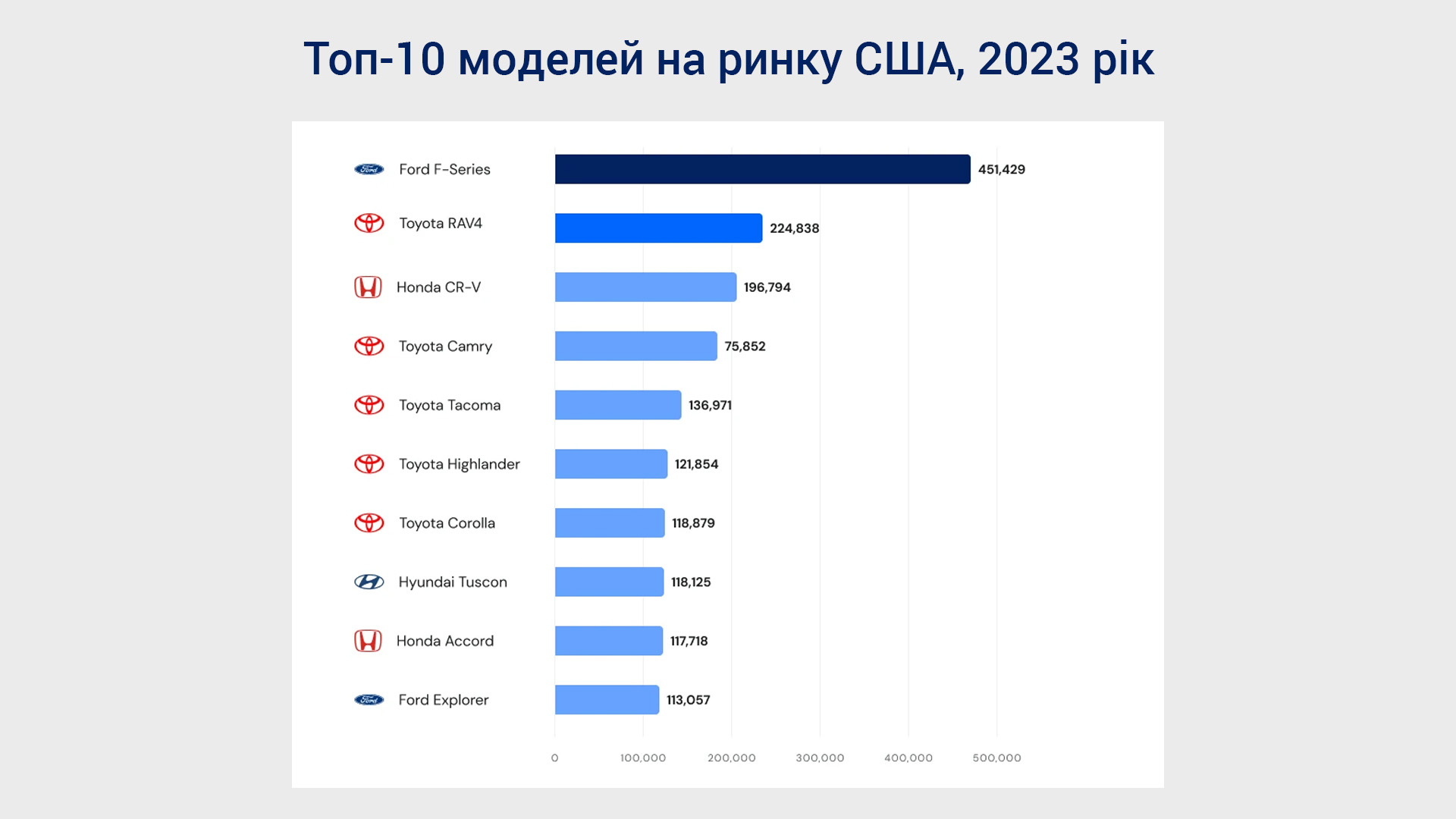
Japanese manufacturers offered something that definitely should not have worked on the American market — compact, economical, inexpensive and reliable cars. But — it worked, and it works to this day, because in each monthly or annual segment we see how many Japanese brands are in the top sellers. By the way, the list of US car manufacturers that have ceased to exist at various times occupies 19 pages of A4 format and contains more than 700 brands.
Europe and Korea
Using the experience of the American auto industry, European automakers, together with state regulators, were able to restrain the expansion of Japanese cars. More precisely, to somewhat regulate their sales volumes, establish tax rules, a number of safety and environmental standards, etc. They were forced not only to import their products, but also to produce them locally, after which several plants were built — Toyota, Honda, Nissan, Mitsubishi, Suzuki.
But, this story was not without processes similar to those that took place in the American car market, which was discussed in the first chapter. In the nineties, the first samples of cars from KIA and Hyundai were exhibited at car shows, but their strange design at the time and lack of technology allowed them to remain almost unnoticed.
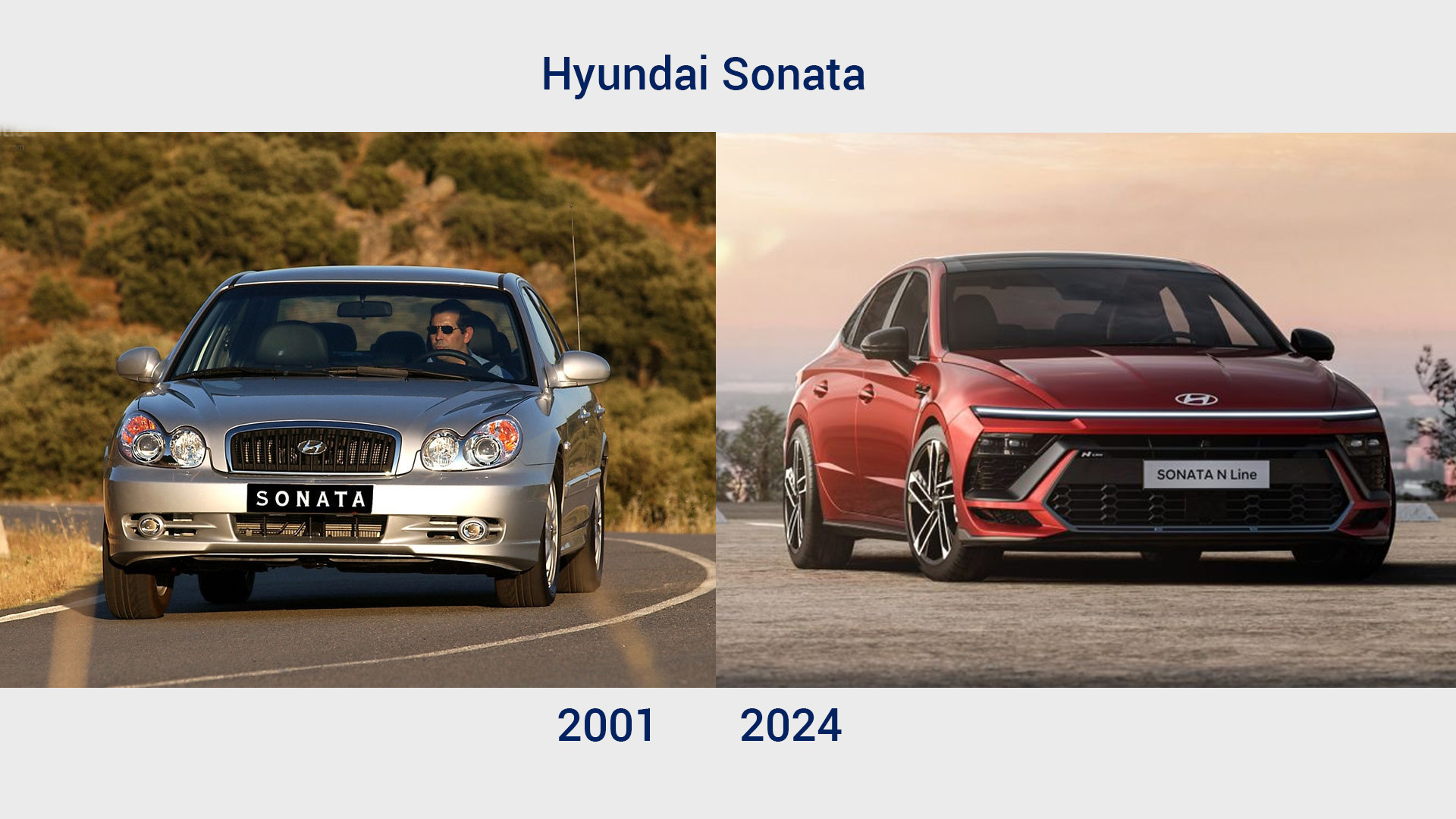
And for nothing — as you know, the design in Korea was adapted to the tastes of the European public quite quickly (yes, except for SsangYong, these were a bit late), the technologies were improved (in the beginning — thanks to proven components from Japan), while leaving attractive prices for their products, and offering a wide range of models — from A-class compacts to even variants of the "business" segment (now also "premium").
Now in Europe, there are several car factories founded by Korean companies, whose products compete quite successfully with local products, so to speak, keeping the "old-timers" of the market in tune. It would seem that everything is finally in its place, for the past several decades, only the "Gigafactory" of Tesla in Germany has been new. And let him deal with his niche electric cars, auto experts said — the time for "electric cars" has not yet come, and the investment in the production of cars with internal combustion engines needs to be returned somehow. And this opinion existed until Model entered the local "Tops" of the market of several countries, even occupying the first places, where they still hold.
Europe and China
It is unlikely that we would allow ourselves to spend so many words (and your time to read them) if we did not feel that there is a reason to start a conversation about something interesting. What exactly? — BYD will start selling passenger cars in Poland.
So be it — because in Europe there are already representative offices of MG (owned by the Chinese SAIC), Maxus, Haval, Chery, Geely (owned by Lync & Co, Volvo, Polestar and Lotus), Aiways, ORA, Seres, Zeekr, HiPhi, Welmeister. BYD has been known to Europeans for a long time, and even more so — electric taxis of this brand operate in London, as well as double-decker buses, which are considered symbols of the city.
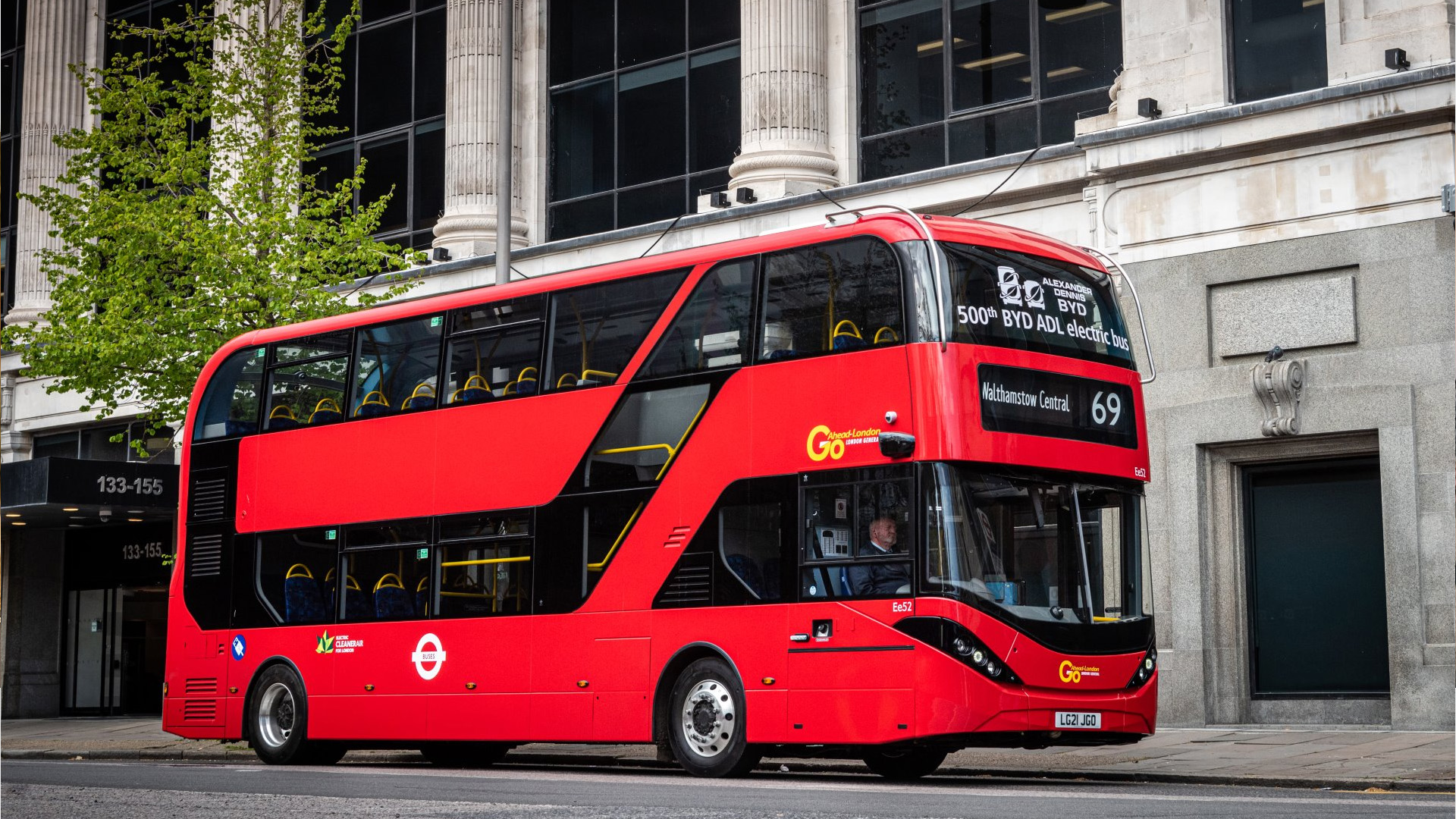
Next, we should move away from generalized interpretations to specifics: BYD Company Limited is a Chinese concern with headquarters in Shenzhen, Guangdong. The company was founded by Wang Chuanfu in 1995. The largest dependent company of the concern is BYD Auto, founded in 2003. The company is currently one of the two (next to Tesla) largest electric vehicle manufacturers in the world, and also produces hybrids of the PHEV type. From 2022, BYD Auto will not produce non-electrified cars. Last year, BYD achieved record sales, exceeding 3 million units of cars. In its home market of China, BYD maintains its position as the most successful car brand and manufacturer.
The company is actively developing activities on the European market, and is already present in approximately 20 countries. The distribution of passenger cars plays a key role here. Now itʼs time to "put down roots" in Poland, which is the sixth largest market in the European Union. Although the share of electric vehicles is currently not large, and is between 3 and 4 percent, it is growing rapidly.
"We will work on further acceleration of this process," said Blade Feng, head of the BYD representative office in Poland. "The company is currently negotiating with potential dealers of the brand, and plans to start selling soon, around June 2024."
The debut in Poland is an element of the broader strategy of the companyʼs development in the European market. As BYD CEO Michael Shu recently told Automotive News Europe, the Chinese automaker plans to increase its share of the European electric vehicle market from 1.1% in 2023 to 5% by 2025. This is due to the opening of a plant in Hungary at the end of next year, which will produce 150,000 cars a year.

As reported by ANE magazine, based on sales data in 2023, at least 70,000 of the mentioned number will be fully electric cars. If the pool includes hybrids, which BYD also plans to offer in Europe, the 5 percent share would be almost 115,000 vehicles. According to research firm Dataforce, BYD sold fewer than 16,000 cars in Europe in 2023, all of which were fully electric.
- And while the entire European market has not yet been flooded with Chinese cars, you can order a turnkey delivery from Europe of the car you need — BMW, Mercedes-Benz, Audi, Renault, Volkwagen or any other from the West Auto Hub company .
Meanwhile, while representatives of one Chinese business are studying the map of Hungary, where it would be better to build a factory, others decided to act faster — it is a joint venture between Stellantis and Leapmotor, which plans to release the first cars of the T03 model in just two months (by the end of June 2024). The price of a new car is about 20,000 euros, the range is promised to be up to 280 km.
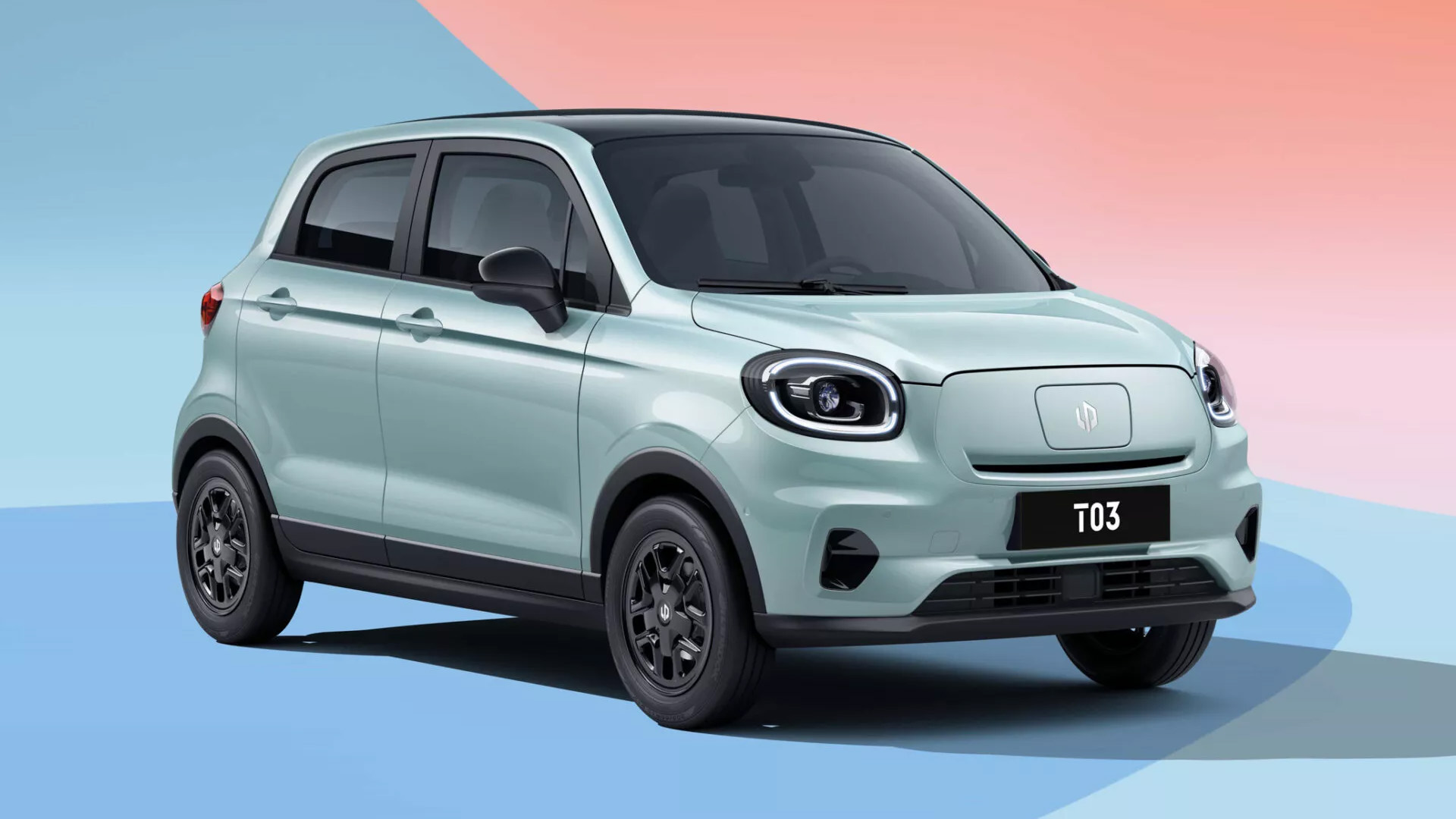
The plant in Tychy, Poland, is capable of producing more than 200,000 cars per year (235,000 by the end of 2023), and currently produces the Fiat 500, 600, Jeep Avenger, and is soon to begin assembling the Alfa-Romeo Milano. The plant administration does not share information about plans to stop production of any of the existing models, as well as about what volumes Leapmotor plans to produce in Tychy every year.
According to IBRM Samar data obtained from the Central Register of Vehicles and Drivers, one new BYD Atto 3 model, i.e. a C-segment SUV, and 10 BYD ETP 3 minibuses were registered in Poland last year.
China and Ukraine
According to the Institute of Car Market Research, 524 new and 233 used BYD cars were registered for the first time in Ukraine in 2023. In addition, 365 purchase and sale agreements of passenger cars of this manufacturer were concluded in the domestic market.
At the same time, in the secondary market, only 57% of cars were electric, the rest — with gasoline engines, part of which (21%) was equipped with HBO. On the other hand, among the new cars (at the same time, it is worth noting — which are delivered by independent multi-brand dealers, since there is no official BYD representative office in Ukraine), almost all (523 units) were electric, and only one with a hybrid power plant.
In total, in 2023, Ukrainians registered 12,400 cars manufactured in China for the first time. Most of them ( 65.2% ) were new, the remaining 34.8% were used. At the same time, almost all cars were passenger cars : 97.5% of the total number (6.9 thousand). There were only 301 trucks. (2.4%), and 9 buses. The absolute majority of cars from China turned out to be electric : 80.2% (10 thousand).
At the same time, sales of Chinese cars in Ukraine have almost doubled in a year, and this, it should be noted, is actually solely due to demand — without excessive efforts on the part of local manufacturers. read more about this in a separate review from IDA.
In the photo — Volkswagen ID.4 Crozz, the most popular new electric car in Ukraine, which won first place in the rating before the brandʼs official dealer started importing it (at the time of writing this article, deliveries of this model had not yet started).
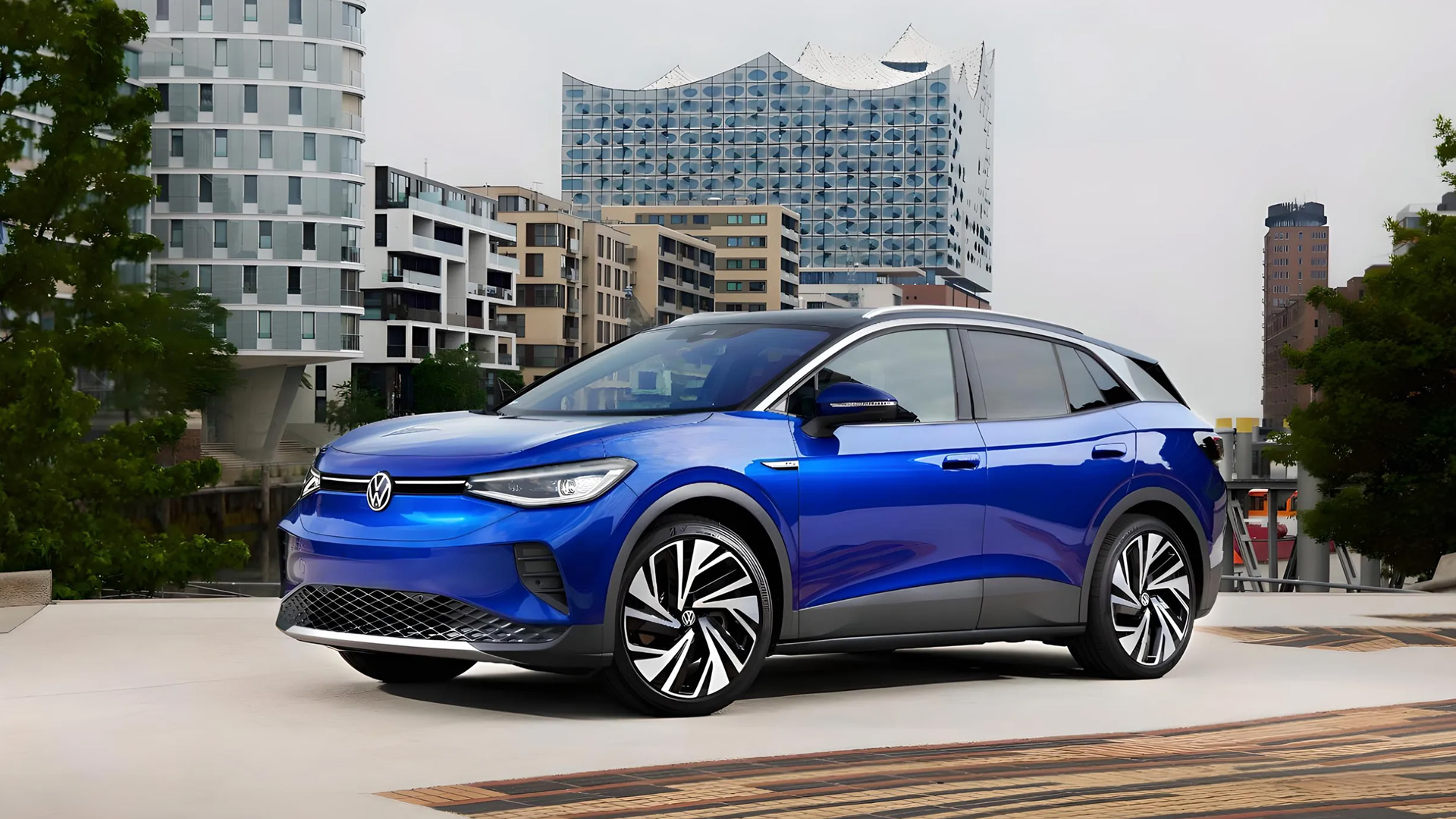
Whatʼs next?
So far, Chinese businesses have mostly followed the path of buying up European factories, and have already sold their products under the brand familiar to local residents. The difference this time is that BYD is entering under its own brand, and also plans to build its own factory — albeit not as large-scale as Teslaʼs, but we should not forget that the same BYD, along with the just-mentioned American manufacturer, are now leaders in the segment.
Therefore, most likely, as of now, the construction of the plant is intended to bring to the minds of European consumers a message such as: "we are local, we work on your land, we give work to your people and we pay taxes right away." And what is more important for buyers — "our cars, made in Europe, according to all your standards, reject stereotypes about "cheap Chinese disposable cars".
It is clear that a significant competitive advantage will remain, and it may not necessarily be a lower price — because you can compete with design, options, performance characteristics, warranty, service and other means.
And this is the most interesting thing according to market analysts — how the events surrounding the start of sales and construction of the BYD plant in Europe will develop, what will be the reaction of consumers and competitors that will offer a Chinese brand under its own brand. And what will be the next step — will this time repeat the story described at the beginning of this article, which first took place in the USA, then in Europe, although with different market players, but in a very similar scenario.
And even sooner we will find out how things will go with sales of the small, but not too affordable Leapmotor T03 in Poland. The interest is precisely how buyers will react to the Chinese brand, which is still unfamiliar to them — whether it will be able to repeat the success of "Panda" and "Malyuk", which were appreciated in the local market for their affordable price, economy and simplicity.
In the end, which is a continuous process, if the European market begins to be filled with Chinese products, it will gradually flow to our initially "secondary" market, and later, perhaps, it will also appear in showrooms with new cars. Considering how quickly these events are developing, we donʼt have long to wait. If the Chinese succeed.
Subscribe to the Telegram channel of the Auto Market Research Institute to be the first to receive information without advertising or spam.


